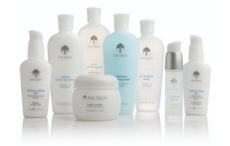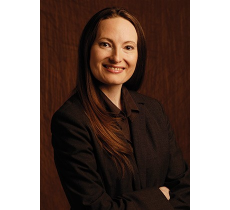Factors that Lead to Environmental Aging
February 12, 2015

![]() Have you ever wondered if where you live and work has an impact on how your skin looks and ages over time? Certainly, we are all aware that the amount and intensity of sun exposure does contribute to aging. The use of products with a good sunscreen can really help to provide protection against the aging effects of UV exposure. However, research is now revealing there is more to this story and we need to make sure we are armed correctly to protect ourselves from other environmental factors.
Have you ever wondered if where you live and work has an impact on how your skin looks and ages over time? Certainly, we are all aware that the amount and intensity of sun exposure does contribute to aging. The use of products with a good sunscreen can really help to provide protection against the aging effects of UV exposure. However, research is now revealing there is more to this story and we need to make sure we are armed correctly to protect ourselves from other environmental factors.
In several of the recent skin biology conferences my team and I have attended during the last year, the effect of pollution on skin has been a hotly discussed topic – covering both the amount and type of pollution to which we are exposed. Several studies have now shown that populations living in more polluted cities have earlier and more severe signs of aging compared to their age-matched rural living counterparts.1 Additionally, the type of pollution can make a difference to the signs of aging that become apparent.

NU SKIN TIP:
Make sure your skin care regime includes anti-oxidants to protect from free radical damage caused by pollutants in the environment. ![]() TWEET THIS
TWEET THIS
As our air quality changes over the years due to increasing pollution and changes in the ozone layer, our skin becomes exposed to different chemicals. Ozone is a strong oxidative agent, while airborne particulate matter (a component of pollution) can trigger a host of different biological pathways in our skin cells. Over time, this can lead to the appearance of aged skin.

Studies done using living skin cells in a laboratory setting have shown that exposure to these different chemicals in our environment can cause problems for the skin cells.2 For example, DNA can be damaged. Also, increased exposure to a greater level of reactive oxygen species or free radicals, which are highly reactive and bounce around the cells, can cause a great deal of harm.
In the majority of cases, our cells have built-in repair mechanisms that are life savers for our cells and allow them to survive and withstand attacks coming from our daily environments. However, an issue may occur if our environments become too polluted – to a level beyond one that our skin can fight off. This is especially the case if our skin has poor nutrition. This underscores the importance of ensuring we are as healthy as possible with our lifestyle choices when we live in a polluted world, including taking nutritional supplements to boost our biological ability to withstand environmental factors.
Similar to air pollution, smoking affects how we age. As far back as 1969, Harry Daniell noticed that smokers looked older than nonsmokers their same age. The results of the study published in 1971 showed that smokers between the ages of 40 and 49 had similar wrinkles to nonsmokers who were 20 year older.3 Since then, more studies have been conducted relating smoking and pre-mature aging.
Nu Skin Recommends:
Celltrex CoQ10 is formulated with olive extract to help protect your skin.
Another factor which can be overlooked is damage from infrared rays. Even the wonderful warming rays of sunlight on a cold winter day can be harmful to our skin. Infrared rays are highly penetrating to skin and can go quite deep into the skin’s structure, creating damage to key components of skin that are necessary for providing support and firmness. Fine lines and wrinkles can result, or a worsening of pre-existing wrinkles to form deeper wrinkles, sometimes called crow’s feet.
There are limited options for changing the environment in which we live. But we can change our nutrition and skin care regimens to minimize the impact our environment will have on the appearance of aging. ■

Written by
Helen Knaggs
Nu Skin VP Global Research and Development
References
1. Andrea Vierkötter, Tamara Schikowski, Ulrich Ranft, Dorothea Sugiri, Mary Matsui, Ursula Krämer and Jean Krutmann. Airborne Particle Exposure and Extrinsic Skin Aging. JID 130:2719-2726 (2010)
2. Vierkotter, Andrea and Krutmann, Jean. Environmental influences on skin aging and ethnic0specific manifestations. Dermato-Endocrinology 4:227-231 (2012)
3. Ann Intern Med. 1971;75(6):873-880. doi:10.7326/0003-4819-75-6-873
You Might Also Like:
-
We live in a world of customization. Almost every element of your life can be tailored to your unique needs and specifications. From diet and exercise to entertainment and media consumption, the power to customize your experiences lies within your grasp. The ability to control your skin care regimen puts you in the driver’s seat, ensuring that you’ll be treating your skin in the best way possible ...
-
How we look can often tell someone a great deal about us. For example what our ethnic background might be, or that of our parents, whether we love being in the sun or the outdoors, what our age might be, or whether we smoke or not. Many factors influence how we look, but not all of these factors affect us all equally and to the same extent. It is this very question of why some factors age some peo...


